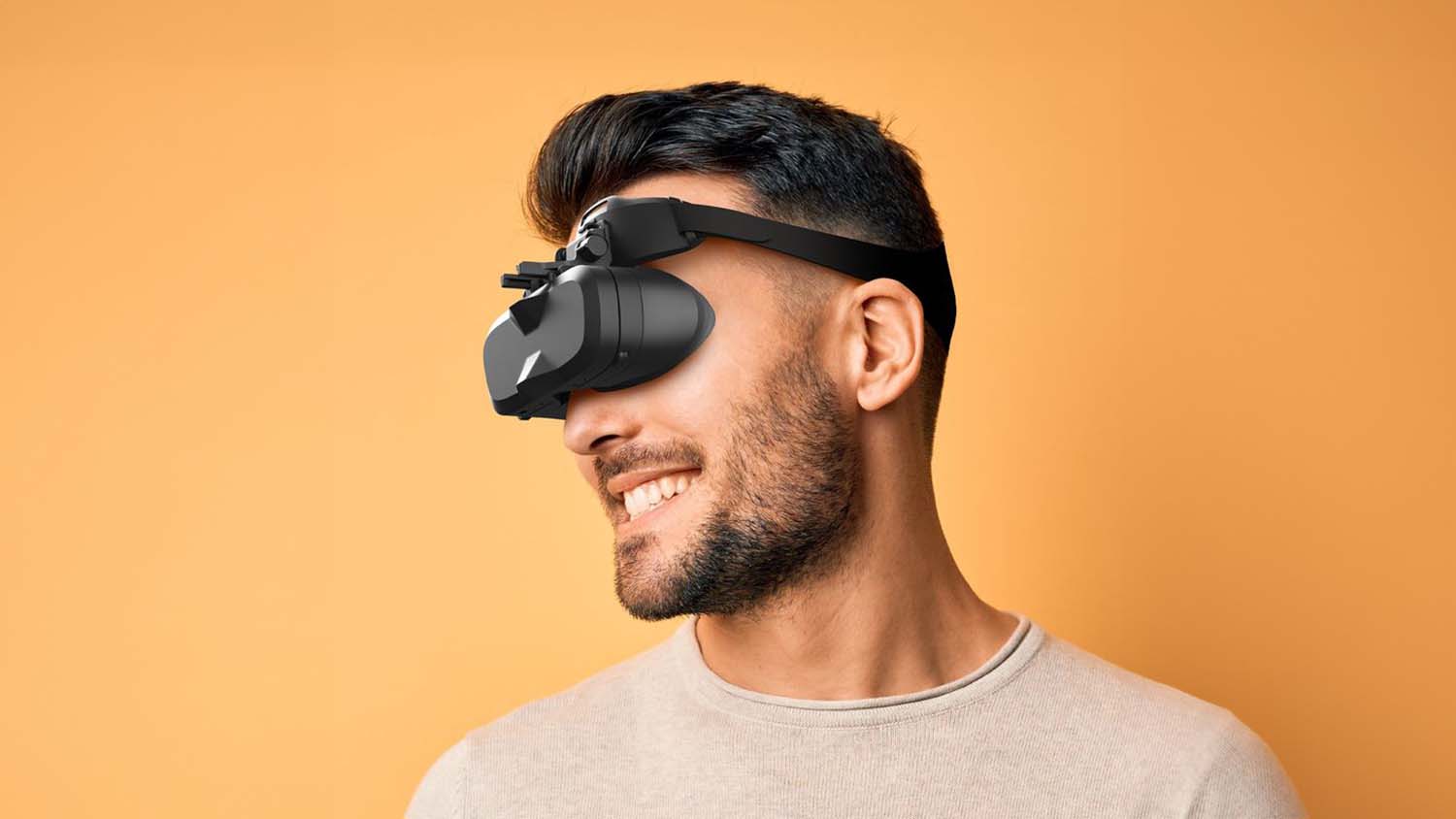Ever wondered how Augmented Reality (AR) glasses can truly feel like an extension of your reality, seamlessly blending the digital and physical worlds?
CREAL’s Clarity: A New Light Field Display for AR Glasses
Swiss start-up CREAL is on a mission to solve a problem that often plagues AR and Virtual Reality (VR) technologies which is natural spatial perception of AR objects. The newest prototype unveiled by CREAL is called Clarity, which is a light field display that is compatible with conventional prescription lenses and can fit into conventional glasses.
Let’s learn more about CREAL’s development of light field display technology and how it could be a game-changer for AR glasses.

Anycubic Coupon – $5 off $50+ sitewide with code DIY5OFF
The Vergence-Accommodation Conflict Explained
Current AR and VR headsets create an artificial viewing experience because the digital elements are displayed in a single, fixed focal plane. Your eyes naturally want to focus on objects at varying distances, but current AR/VR tech forces your eyes to focus on a single “plane of focus”. This often leads to eye strain, headaches, and visual fatigue. This mismatch is known as the vergence-accommodation conflict. The vergence-accommodation conflict can make extended use uncomfortable and limit the overall experience.
CREAL’s light field display takes the vergence-accommodation conflict into consideration when developing their product so that digital content is projected into space with the proper depth. This allows your eyes to focus on digital content at any distance, just as they would in the real world.
Miniaturization Breakthrough: Clarity’s Design
The earlier prototypes from CREAL were a bit on the bulky side, which proved to be difficult in terms of real-world application. CREAL has been working on a solution to reduce their technology’s footprint. The new “Clarity” prototype is a big step forward, because the technology is housed within a pair of glasses and is compatible with conventional prescription lenses.
According to CREAL, Clarity provides a high degree of transparency and does not impair vision. It also allows for regular eye contact with others.
Here’s a breakdown of what this means for you based on CREAL’s statements:
- Uncompromised Vision Correction: Your prescription lenses work as they should.
- Natural Eye Contact: You can interact with people without a digital barrier.
- Comfortable Immersion: A more natural viewing experience reduces eye strain.

Anycubic Coupon – $5 off $50+ sitewide with code DIY5OFF
Conformance with OpenXR Standard
Clarity’s compatibility with the OpenXR standard is worth noting because OpenXR is an open, royalty-free standard that helps software developers create applications that are compatible across a wide range of AR and VR hardware platforms. OpenXR ensures your AR experience remains consistent across different devices. This compatibility simplifies development and promotes wider adoption, which also means that users are not locked into a specific ecosystem and can use a variety of hardware and software options.
CREAL’s Vision: Vision Care First
CREAL’s CEO, Tomas Sluka, understands that the primary purpose of AR glasses is vision correction and enhancement. He believes that AR glasses should put vision care first before we can start enhancing our world with AI-powered content.
Clarity ensures that AR glasses meet vision care requirements and traditional eyewear features at its core.

Testing and Evaluation: What to Expect
CREAL’s Clarity prototype is available for testing and evaluation and the company welcomes OEMs to license the technology for integration into their products. The prototype was recently shown at the SPIE AR | VR | MR Display conference in San Francisco.
It’s important to manage expectations as the the technology is still in development, but it is a promising product that will continue to be developed.
The Future of AR with Light Field Technology
CREAL’s Clarity prototype and light field display technology offers a glimpse into a future where AR glasses are more seamless, comfortable, and visually natural. Let’s consider the implications of this technology and the potential impact it could have.
Enhanced User Experience
The impact of reduced eye strain cannot be overstated. Light field technology aims to minimize the vergence-accommodation conflict and will make prolonged AR use much more comfortable. When AR feels like an extension of reality and not a strain on your eyes, you’re more likely to integrate it into your daily life.
Improved Visual Fidelity
The ability to focus naturally on digital objects at varying distances could transform gaming, design, and collaboration. Imagine playing a strategy game where you can effortlessly shift your focus from the overall battlefield to individual units, or collaborating with colleagues on a 3D model and inspecting intricate details with natural ease.
Broader Applications
Beyond entertainment and productivity, light field displays could revolutionize fields like medicine, education, and training. Surgeons could overlay real-time patient data onto their field of vision during procedures, students could interact with holographic models in the classroom, and technicians could receive step-by-step instructions overlaid onto equipment during repairs.
Challenges and Considerations
While the potential of light field technology is exciting, there are still challenges to overcome.
- Computational Power
- Display Brightness and Efficiency
- Cost
As technology advances, we can anticipate further refinements and breakthroughs that address these issues.
The Road Ahead: What to Watch For
CREAL’s Clarity prototype represents a significant step forward, but the journey towards widespread adoption of light field AR glasses is just beginning. Here are some key areas to keep an eye on:
Miniaturization and Integration
The industry should keep an eye on the shrinking size and weight of display components, as this is crucial for creating AR glasses that are stylish and comfortable enough for everyday wear. CREAL’s progress in fitting their technology into conventional glasses is encouraging, but further advancements will be necessary to achieve true consumer-ready designs.
Performance and Efficiency
Improvements in display brightness, contrast, and energy efficiency will be vital for delivering compelling AR experiences without compromising battery life or visual quality. Light field displays require sophisticated optics and processing, so innovations in these areas will directly impact the overall performance and usability of AR glasses.
Software and Content Ecosystem
The industry should watch out for the development of software and content that takes full advantage of light field technology’s capabilities. This includes creating intuitive user interfaces, immersive AR applications, and tools for developers to easily create and deploy light field content.
Standardization and Interoperability
The industry can promote collaboration and compatibility by establishing industry standards for light field displays and AR platforms. Open standards like OpenXR will play a key role in ensuring that AR experiences are consistent across different devices and platforms, fostering innovation and reducing fragmentation.
Addressing Potential Drawbacks
It is important to address any potential drawbacks of light field technology as it matures. This might include mitigating visual artifacts, optimizing for different viewing conditions, and addressing any concerns about eye strain or visual discomfort.
Is Clarity a Game Changer?
CREAL’s Clarity prototype is more than just a new piece of hardware. It’s a bold step toward a future where AR glasses are seamlessly integrated into our lives, enhancing our vision and augmenting our reality. By prioritizing vision care and addressing the vergence-accommodation conflict, CREAL is paving the way for a more comfortable, natural, and immersive AR experience.
Below is information summarized in tables for your convenience.
Table 1: Key Features of CREAL’s Clarity Prototype
| Feature | Description | Benefit |
|---|---|---|
| Light Field Display | Projects digital content with correct depth | Enables natural focusing, reduces eye strain |
| Miniaturized Form Factor | Fits inside conventional glasses | More practical and comfortable for everyday use |
| Prescription Lens Compatible | Works with existing prescription lenses | No need to sacrifice vision correction |
| High Transparency | Allows natural vision and eye contact | Maintains social interaction, doesn’t feel isolating |
| OpenXR Compatibility | Supports the OpenXR standard | Ensures compatibility with a wide range of AR software and platforms |
Table 2: Potential Applications of Light Field AR Technology
| Application | Description | Benefit |
|---|---|---|
| Gaming | Immersive gameplay with natural depth perception | More realistic and engaging gaming experiences |
| Design & Engineering | Collaborative 3D modeling and visualization | Improved accuracy, faster iteration, better communication |
| Medical | Overlay patient data during surgery, visualize medical scans in 3D | Enhanced precision, improved diagnostics, better patient outcomes |
| Education | Interactive holographic models, virtual field trips | Engaging learning experiences, improved knowledge retention, access to remote resources |
| Training | Step-by-step instructions overlaid onto real-world equipment | Reduced errors, faster training times, improved safety |
Table 3: Challenges and Considerations for Light Field AR
| Challenge | Description | Potential Solution |
|---|---|---|
| Computational Power | Light field rendering requires significant processing power, which can strain battery life and limit performance. | Develop more efficient rendering algorithms, optimize hardware for light field processing, explore cloud-based rendering solutions. |
| Display Brightness | Light field displays can suffer from lower brightness compared to traditional displays, making them difficult to use in bright environments. | Improve display efficiency, use advanced light management techniques, explore new display materials and technologies. |
| Miniaturization | Shrinking light field technology into a compact, wearable form factor presents significant engineering challenges. | Develop new optical designs, use advanced microfabrication techniques, explore innovative materials and manufacturing processes. |
| Cost | The complex components and manufacturing processes involved in light field displays can make them expensive to produce. | Streamline manufacturing processes, use economies of scale, explore alternative materials and designs to reduce costs. |
| Disclaimer: Please note that as an AI, I may occasionally produce content that is unintentionally similar to other sources. If you suspect plagiarism, please contact the content creator with details for review. |
Anycubic Coupon – $5 off $50+ sitewide with code DIY5OFF




